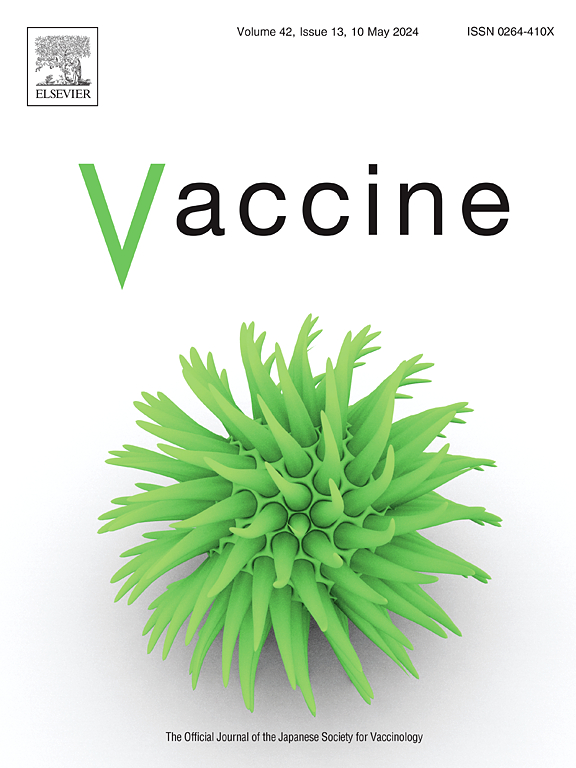鸡卵黄抗体(IgY)的研制可有效防治鹅星状病毒感染
IF 4.5
3区 医学
Q2 IMMUNOLOGY
引用次数: 0
摘要
鹅星状病毒(GAstV)是养鹅业的一大威胁,目前还没有有效的药物或疫苗。开发安全有效的预防和治疗策略对减少其影响至关重要。在我们的研究中,我们使用 GAstV GDCS 株作为疫苗抗原,发现 1 ‰ 的甲醛浓度可在 37 °C 下 24 小时后有效灭活病毒。灭活的病毒抗原随后被白油乳化,制成 GAstV 灭活疫苗。22 周龄的蛋鸡接种了四次该疫苗,随后使用聚乙二醇(PEG)沉淀法从蛋黄中纯化了 IgY。第四次免疫后,IgY 浓度为 3.133 mg/mL。SDS-PAGE 显示 IgY 有一条 65 kDa 的重链和一条 25 kDa 的轻链。IgY 在体外能有效中和 GAstV,滴度高达 2^9.67。给雏鹅注射 IgY 能有效预防和治疗 GAstV 感染,减少症状、死亡率、组织损伤和病毒载量。这些发现为临床预防和治疗 GAstV 感染提供了重要工具。本文章由计算机程序翻译,如有差异,请以英文原文为准。
Development of a chicken egg yolk antibody (IgY) could effectively prevent and treat goose astrovirus infection
Goose astrovirus (GAstV) is a major threat to the goose industry, with no effective drugs or vaccines available. Developing safe and effective prevention and treatment strategies is essential to reduce its impact. In our study, we used the GAstV GDCS strain as the vaccine antigen and found that a 1 ‰ formaldehyde concentration effectively inactivated the virus after 24 h at 37 °C. The inactivated virus antigen was subsequently emulsified with white oil to formulate the GAstV inactivated vaccine. This vaccine was administered four times to 22-week-old laying hens, and IgY was subsequently purified from the egg yolk using the polyethylene glycol (PEG) precipitation method. After the fourth immunization, IgY concentration was 3.133 mg/mL. SDS-PAGE showed IgY has a 65 kDa heavy chain and a 25 kDa light chain. The IgY effectively neutralized GAstV in vitro with a titer of up to 2^9.67. Administering IgY to goslings effectively prevents and treats GAstV infection by reducing symptoms, mortality, tissue damage, and viral load. These findings offer significant tools for the clinical prevention and management of GAstV infection.
求助全文
通过发布文献求助,成功后即可免费获取论文全文。
去求助
来源期刊

Vaccine
医学-免疫学
CiteScore
8.70
自引率
5.50%
发文量
992
审稿时长
131 days
期刊介绍:
Vaccine is unique in publishing the highest quality science across all disciplines relevant to the field of vaccinology - all original article submissions across basic and clinical research, vaccine manufacturing, history, public policy, behavioral science and ethics, social sciences, safety, and many other related areas are welcomed. The submission categories as given in the Guide for Authors indicate where we receive the most papers. Papers outside these major areas are also welcome and authors are encouraged to contact us with specific questions.
 求助内容:
求助内容: 应助结果提醒方式:
应助结果提醒方式:


